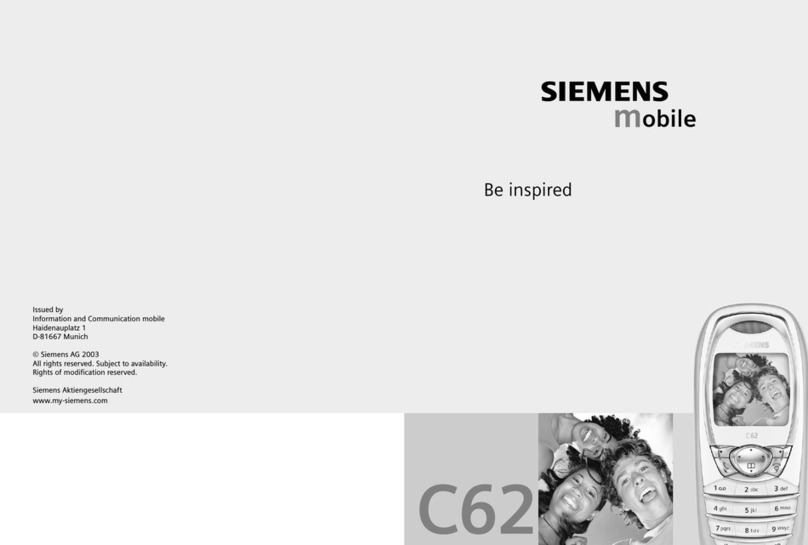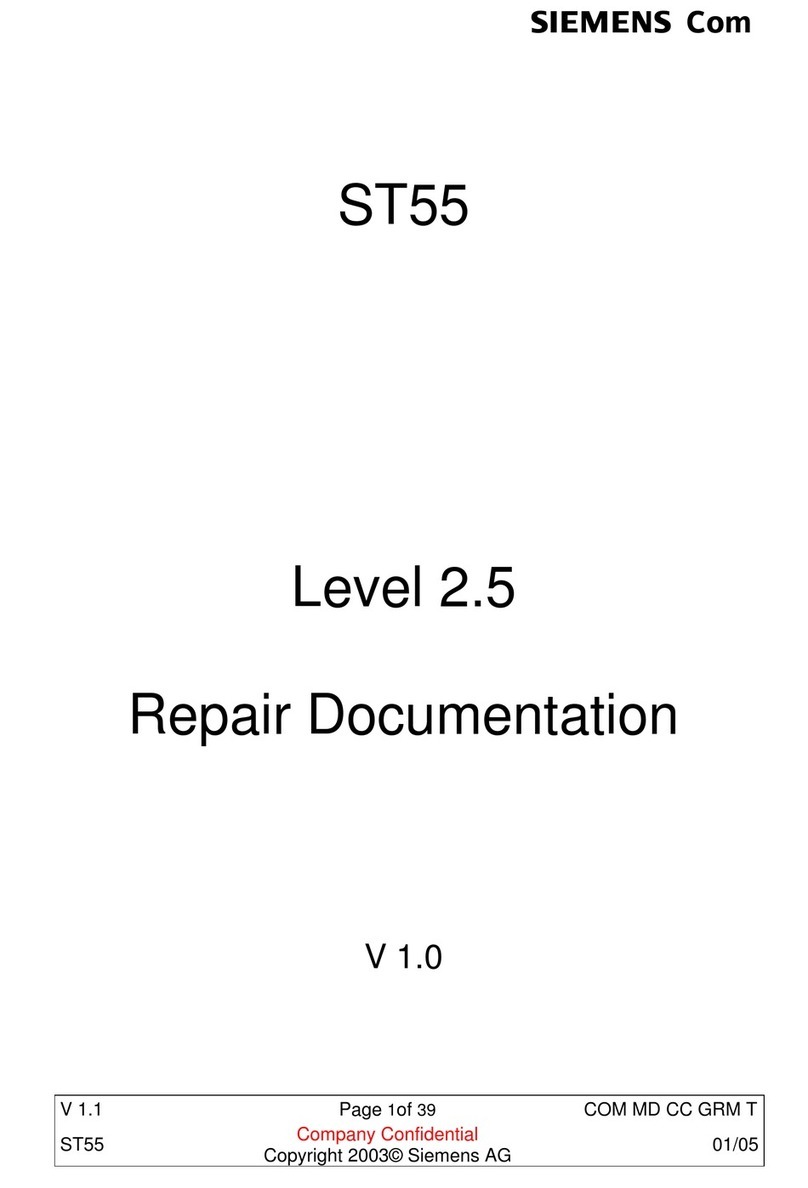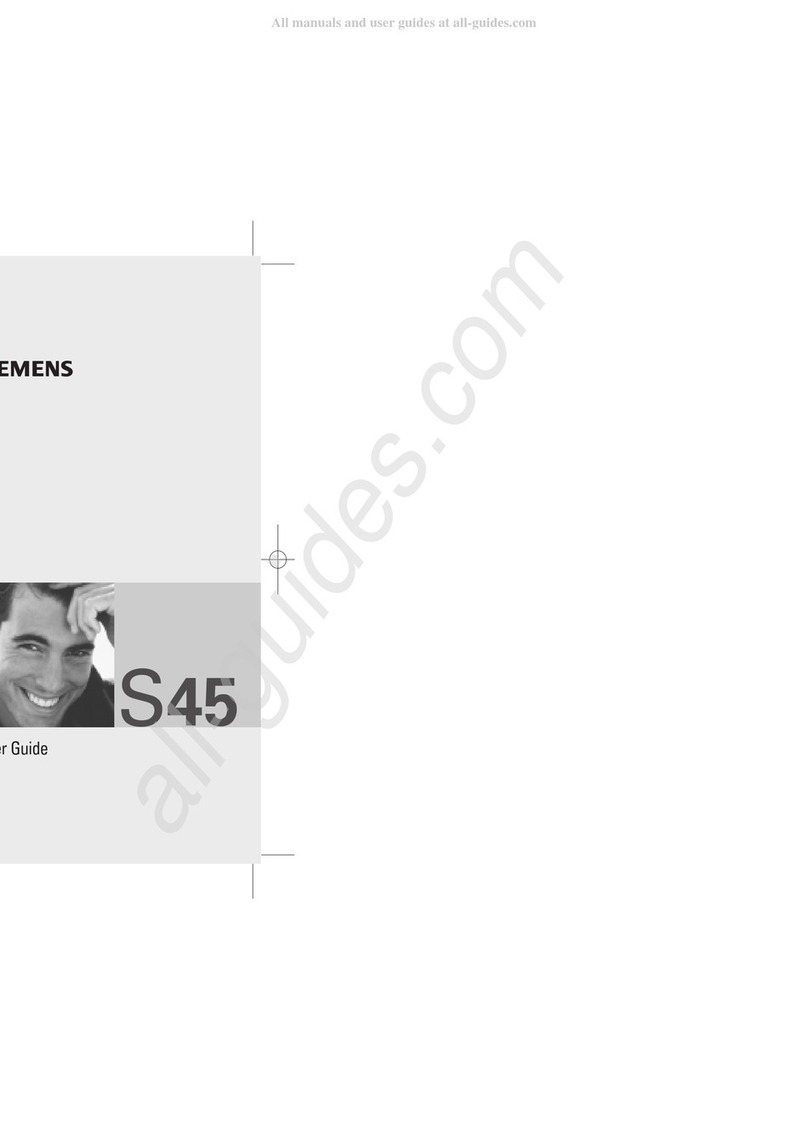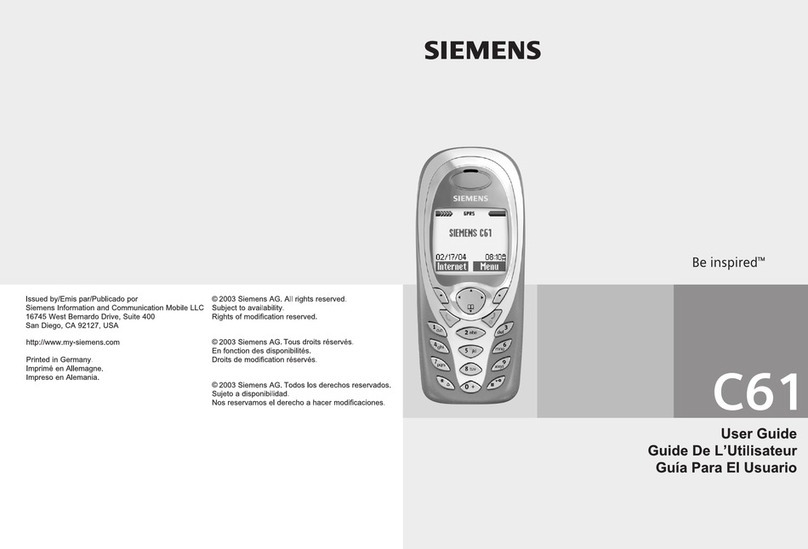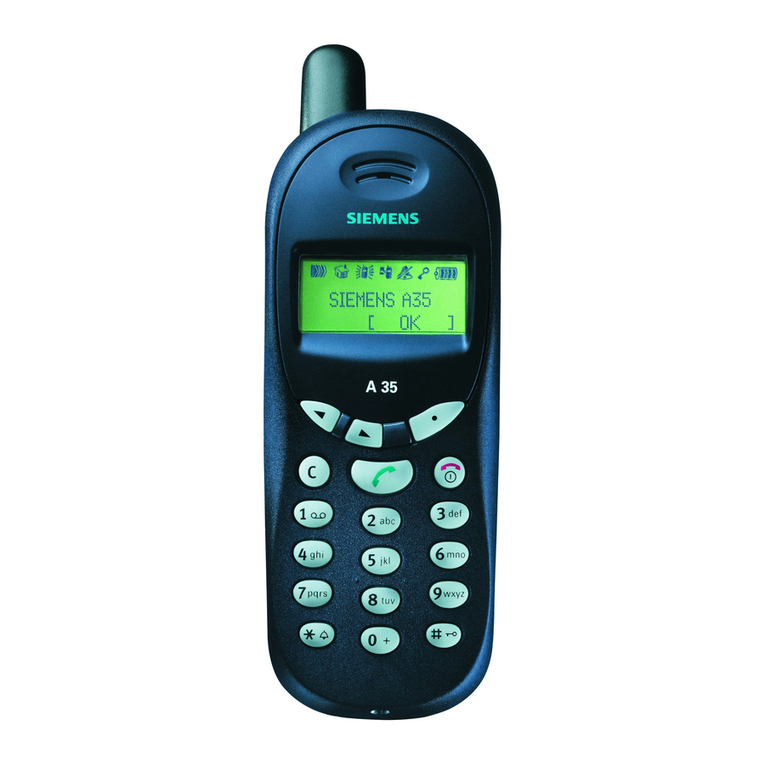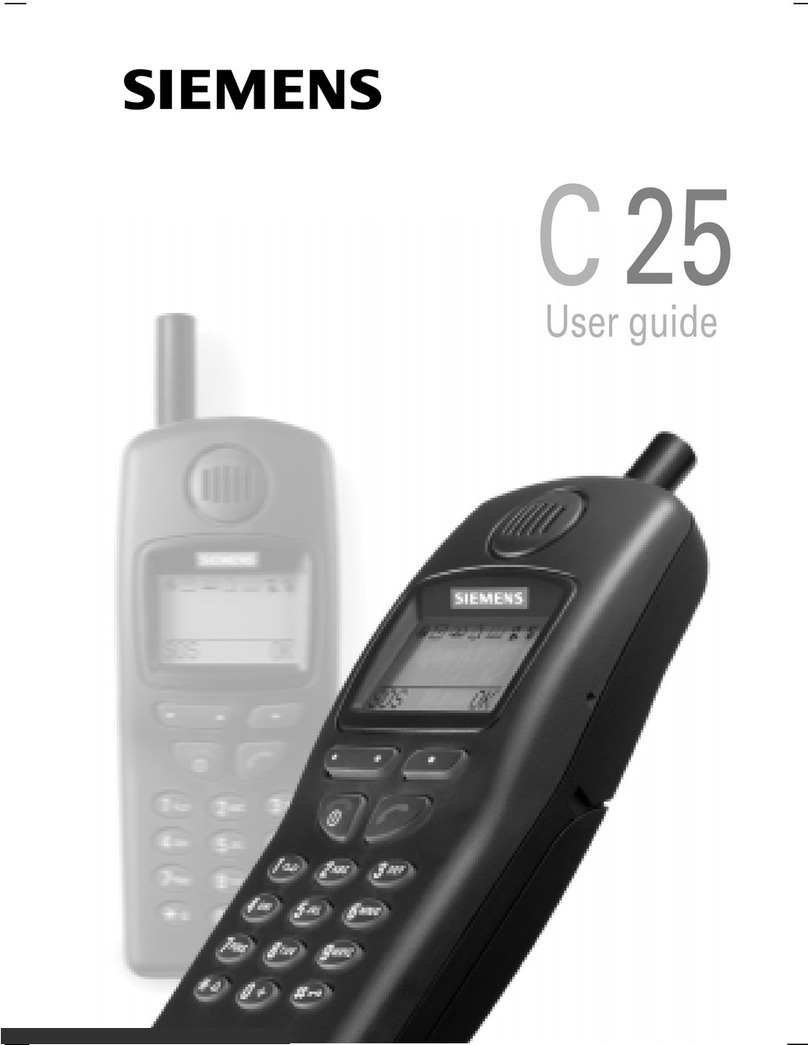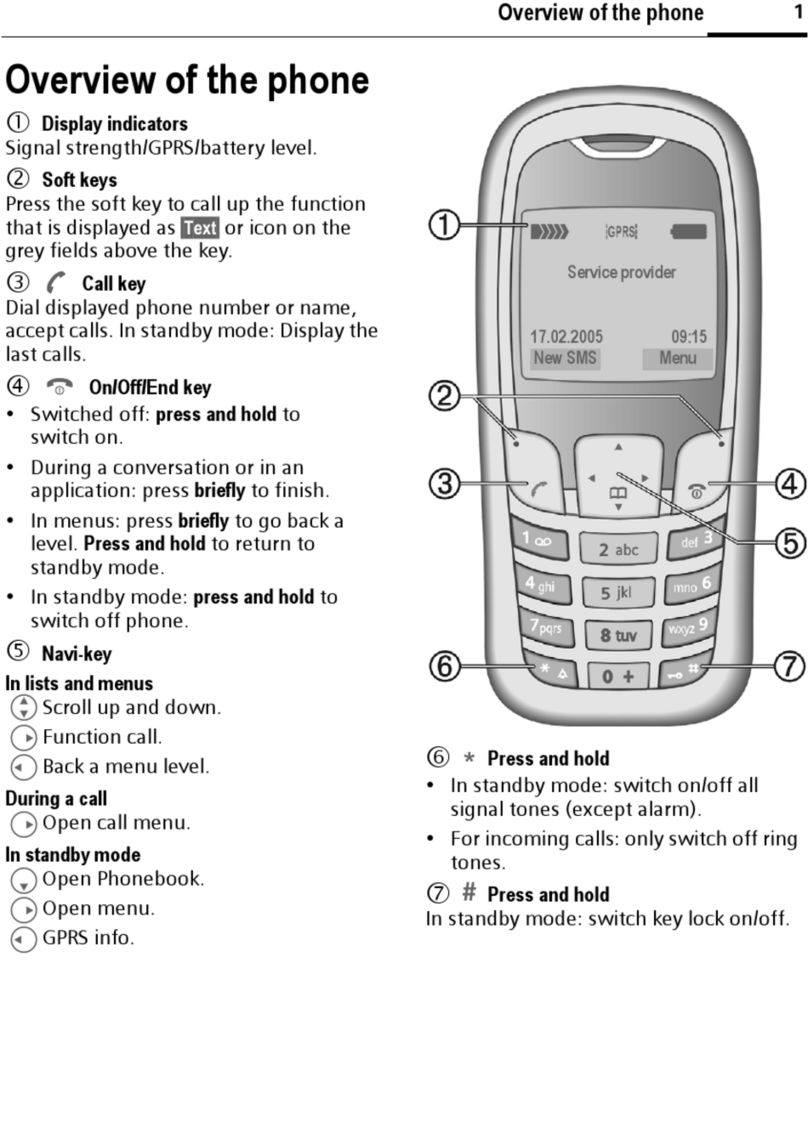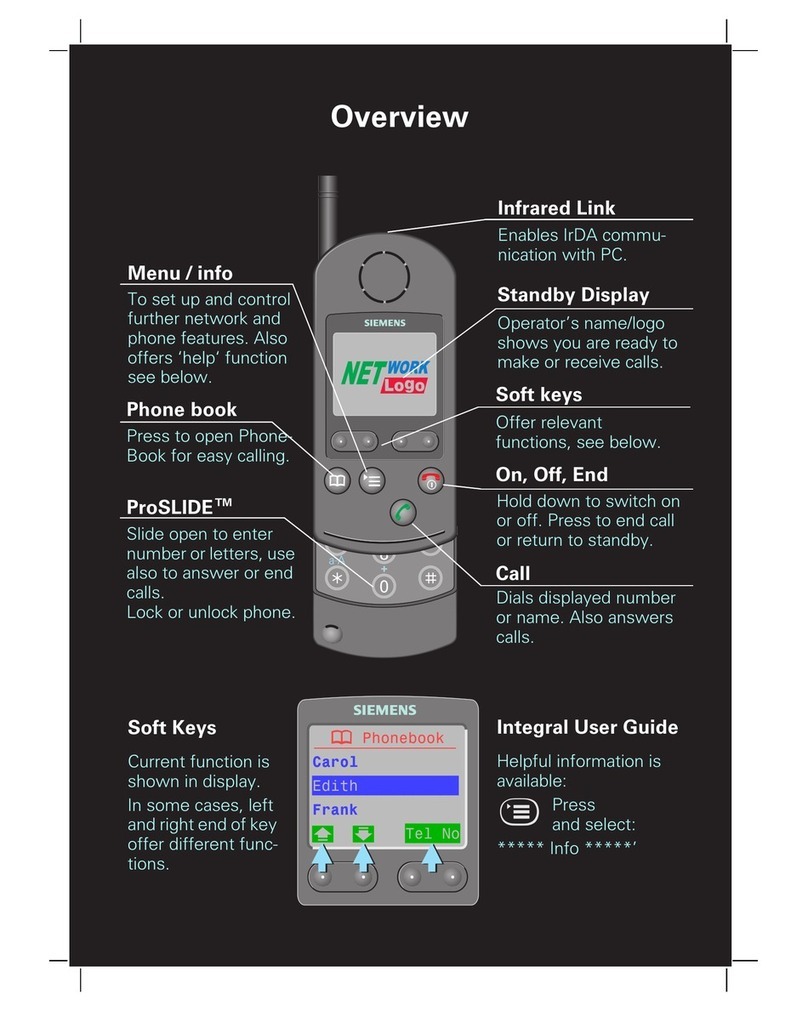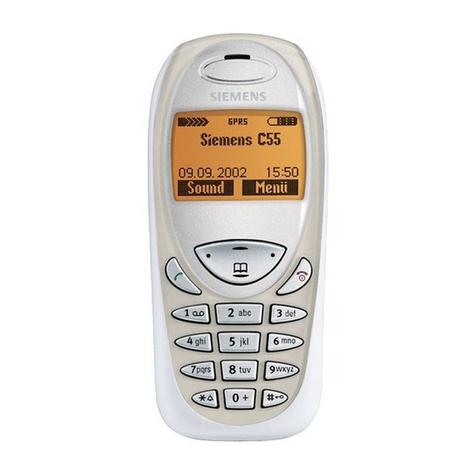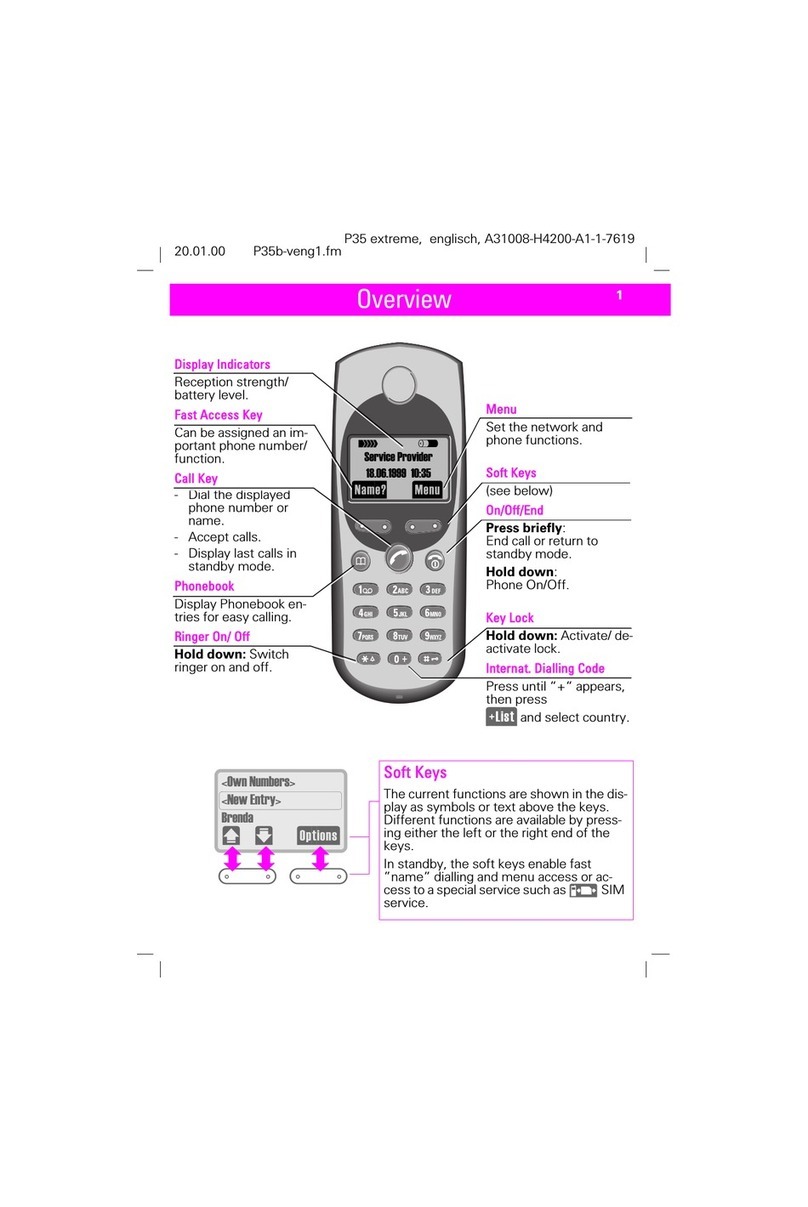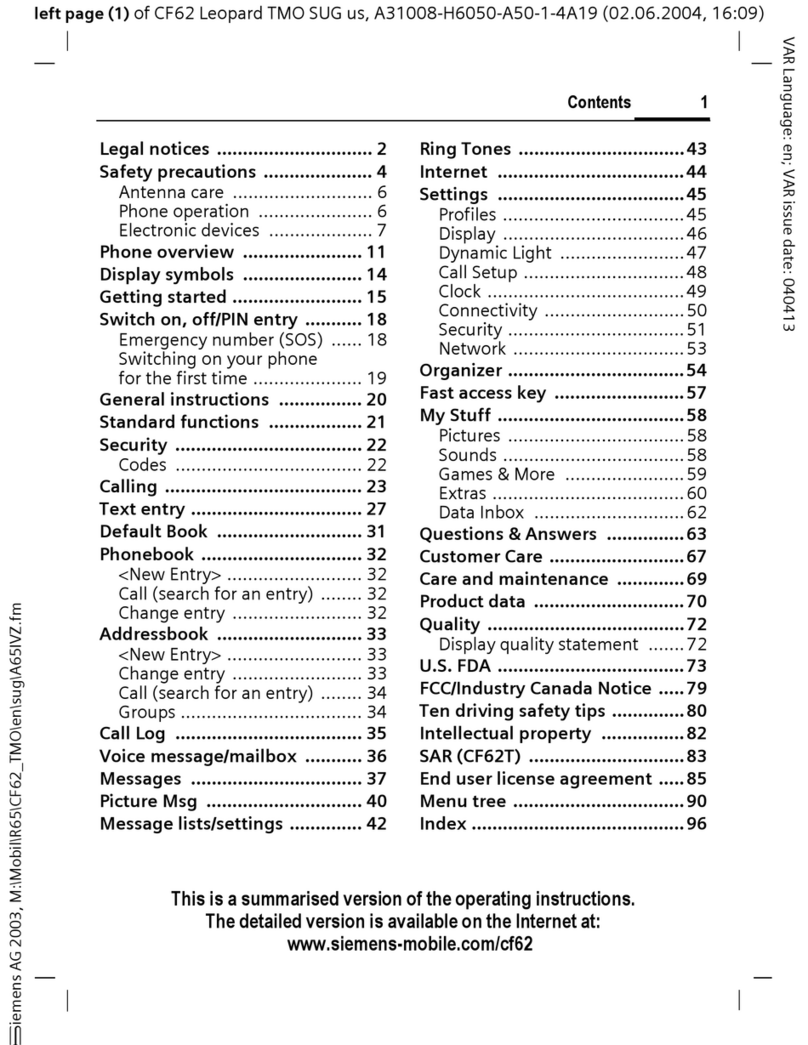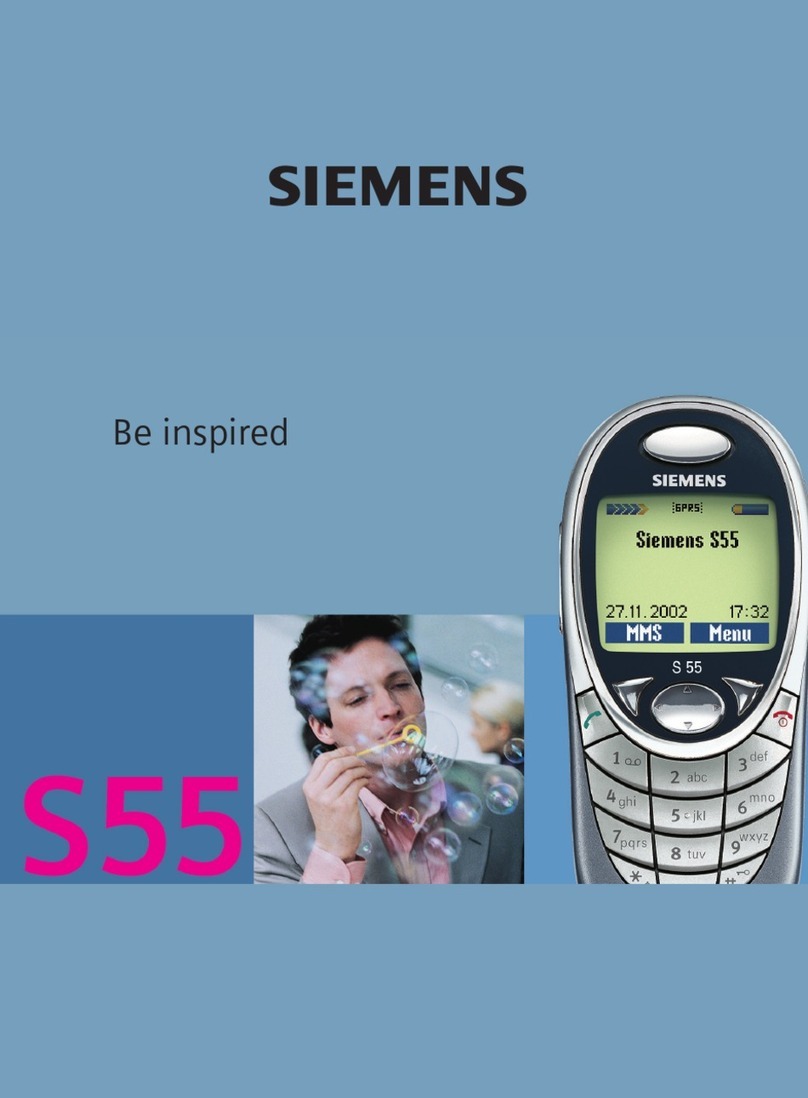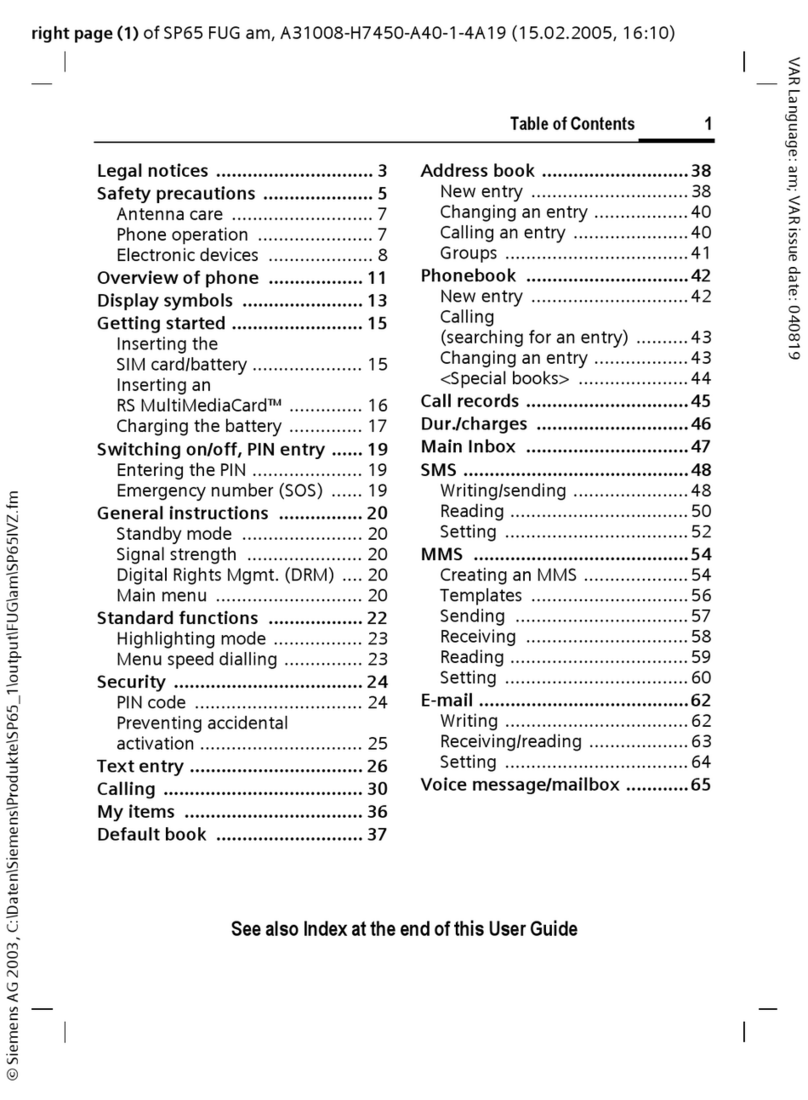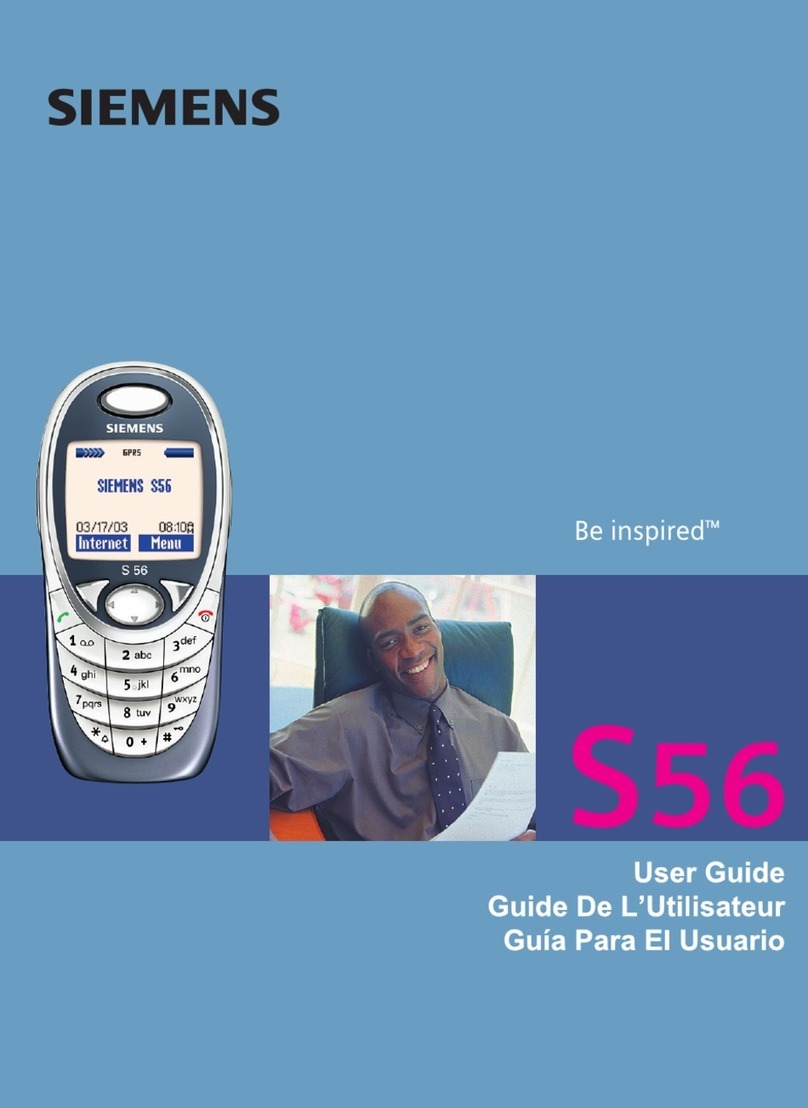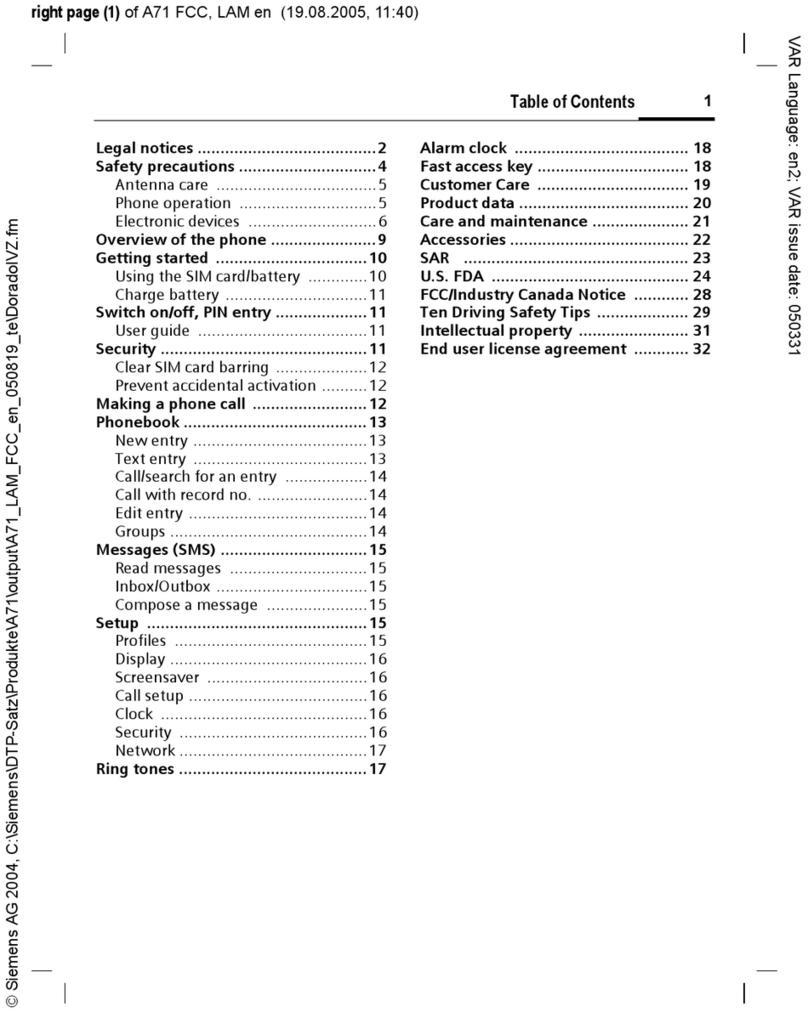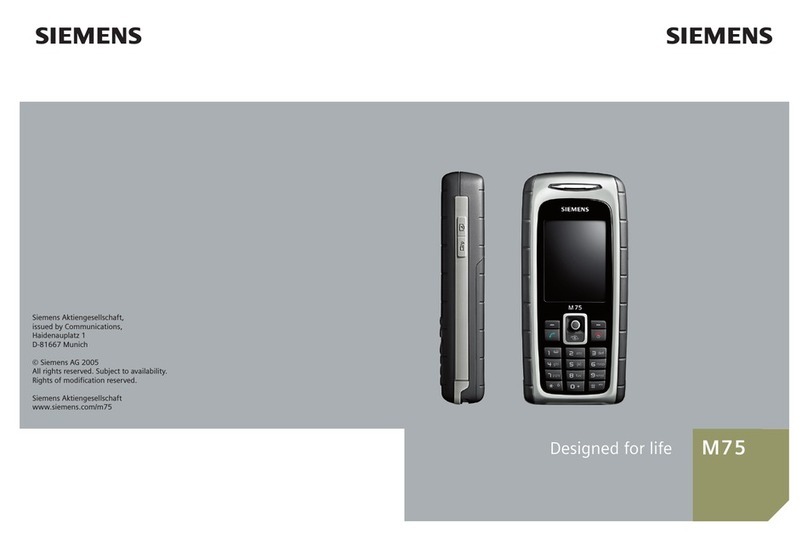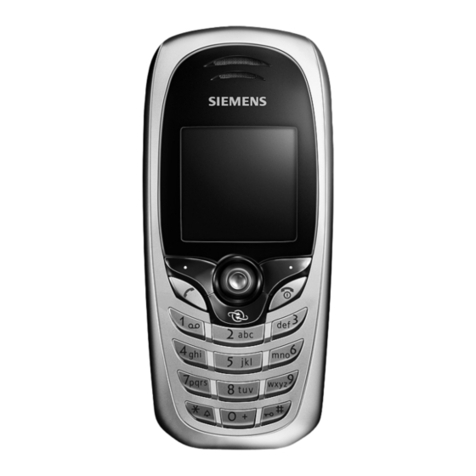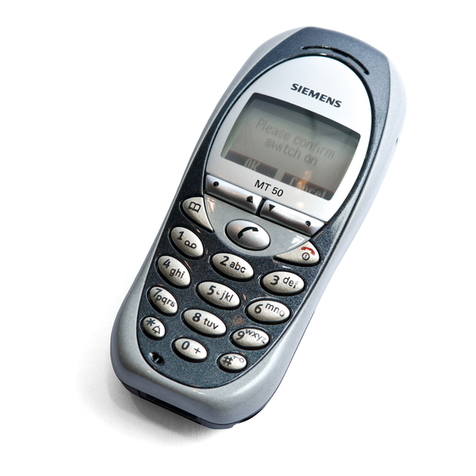AX75 Level 2 Service Manual
Copyright © Siemens Pte Ltd.
All Rights Reserved May 2005
COM D CCQ SLI APAC Page 4 of 34 Internal Use Only
2 Key Features
Bands • Triple Band E-GSM 900 / GSM 1800 / GSM 1900
• EGSM Phase 2 / phase 2+
• GPRS Multi Class 8
Battery • Li-Ion Battery Pack
• Nominal Voltage : 3.7V
• Nominal Capacity : 600 mAh
• GSM Capacity: 580 mAh
• Power Input: 2.0 A (0.6 ms) / 0.25 A (0.4 ms)
• Cut-off Threshold 3.2 V
Stand-by Time • up to 220 h (standard battery)
Talk Time • up to 300 min (standard battery)
SIM Card
• Small (”Plug In”) 3V SIM card (Phase II)
• To insert the SIM card, the battery pack must be
removed.
GSM Antenna • Integrated triple band antenna for EMEA/APAC.
Dimensions • 101 x 44 x 20 mm (L x W x H)
Weight • Approx. 80 g
Charging time • < 2 h for 100%
Receiver Sensitivity • GSM 900: -102dBm (Specification, static & with fading)
• GSM 1800/1900: -102 dBm (Specification, static & with
fading)
Receiver sensitivity must comply with the corresponding GSM
recommendations in all operating conditions (temperature,
battery level, etc)
Transmitter Power • GSM 900: nominal 2W (Specification: Class 4 Mobile
phone)
• GSM 1800/1900: nominal 1W (Specification: Class 1
Mobile phone)
Transmitter output characteristics is according to GSM 11.10
specification implying all specified operating conditions
(temperature, battery level ...).
Transmitter set points will be specified for GSM and PCN when
typical values and statistical values become available.
Speech Codec
• Half Rate, Full Rate, Enhanced Full Rate and Adaptive
Multi Rate speech coders are available as standard.
Temperature
Range • -100C to +550C (Normal operation)
• -300C to +850C (Storage capability)
